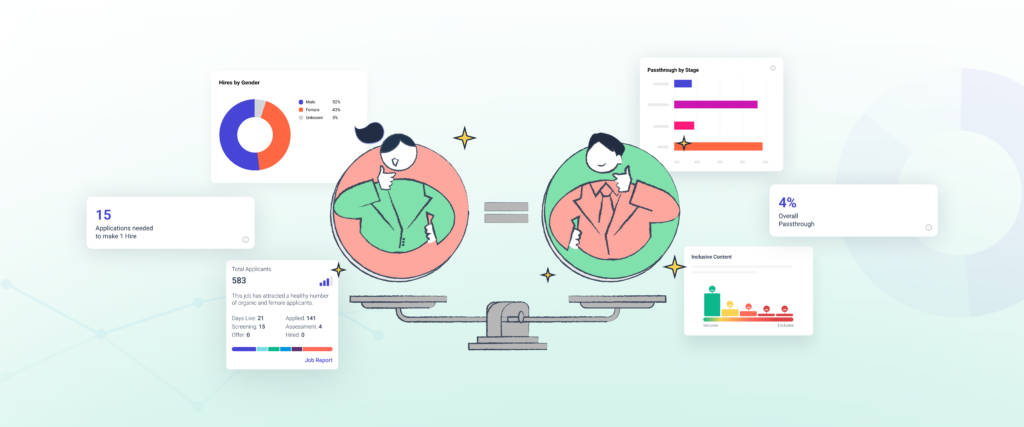5 Tips for Responsible Diversity Analytics in Talent Acquisition

With the sociopolitical landscape changing and scrutiny of corporate DEI efforts increasing, some employers are diminishing their reliance on diversity data. But this is a step in a disappointing and dangerous direction. As a TA leader, diversity analytics offers an opportunity to anticipate and invest in closing gaps in equity for everyone. More importantly, it […]
Datapeople Platform Update: January 2024

We’re kicking 2024 off with a bang – or – shall we say, with confidence 😎 Alongside our amazing customers, employees, and investors we’re thrilled to start the New Year with a renewed sense of excitement and determination for what we’re able to achieve together in the talent acquisition landscape – hint: our latest report […]
The Importance and Challenges of Understanding Candidate Gender in Talent Acquisition

Since its establishment in 1965, the Equal Employment Opportunity Commission (EEOC) has worked to combat workplace discrimination across the United States. In support of that effort, the commission established reporting standards for key demographic fields, namely gender, race/ethnicity, veteran status, and disability status. All private sector employers with more than 100 employees (and federal contractors […]
How Does Datapeople Determine Gender? An Algorithm, Why?

Understanding the diversity of your talent pool is crucial for building a fair and inclusive work environment. In the realm of gender representation, traditional methods that rely on self-reported data often fall short, leaving recruiters with incomplete or unreliable data. That’s where Datapeople’s innovative gender inference model steps in, offering valuable insights without infringing on individual privacy.
Recruiting Metrics that Matter Heading into 2024

In the fast-paced and competitive world of talent acquisition, measuring the right metrics can mean the difference between success and stagnation. As we approach 2024, it’s important to stay ahead of the curve by leveraging data-driven insights to optimize your recruiting strategy and guide your hiring process. But with so many measurements to choose from, […]
Guarding Against Candidate Ghosting: Proactive Measures for Bucking the Trend

In a tight labor market, it’s no surprise that candidate drop-off is a persistent challenge. A challenge that can cost your talent acquisition team and entire business a staggering amount of time, budget, and opportunity. What may surprise you is that candidate drop-off today isn’t much more prevalent than it was before the pandemic turned […]
Transformative Impact of Hiring Efficiency and Fairness Recognized Among ‘Next Big Things in Tech’

We’re proud to announce Datapeople was selected as one of Fast Company’s Next Big Things in Tech. This recognition celebrates technology breakthroughs that are anticipated to define their industry and address important real-world problems. Next Big Thing in Tech 2023! Datapeople was founded on a singular idea, to empower talent acquisition teams around the world […]
Do More With Less: 3 Changes To Immediately Improve Inbound Applicant Quality

Inbound applicant pools for some jobs and locations have ballooned in 2023 thanks largely to two major trends – layoffs and hiring slowdowns led by (but not limited to) the tech industry and the Return to Office wave. According to a LinkedIn study, remote jobs make up around 14% of all listings across the platform […]
Reduce Cost Per Hire With Clear Applicant Sourcing Data

Leverage applicant sourcing data from both inbound and outbound channels to allocate resources more strategically.
Improve Recruiting Efficiency and Candidate Experience With Data

Leverage hiring process pass-through and drop-off data for better candidate experience and recruiting efficiency.

